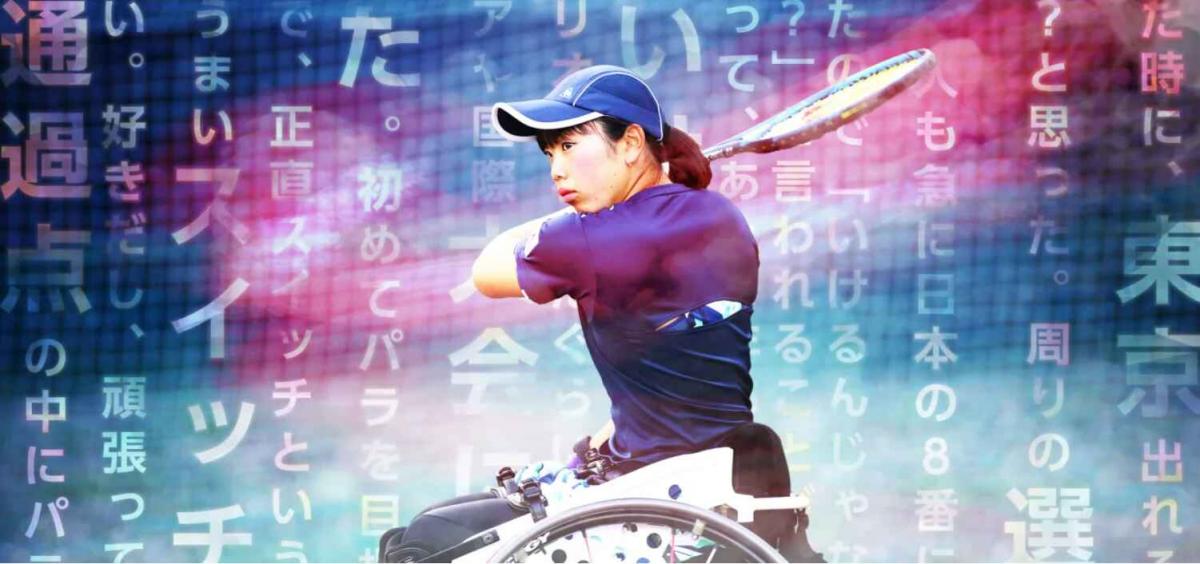Japan's Shiori Funamizu rises from the junior ranks in wheelchair tennis
The 20-year-old took on the challenge of learning how to master the different intricacies of wheelchair tennis. Now, she wants to be like Yui Kamiji. 09 May 2021
Two years after starting wheelchair tennis, Shiori Funamizu rose to the top of the junior world ranking.
Now, the Japanese player is aiming for the Tokyo 2020 Paralympic Games, where she hopes to be on the same court as the players she admires most.
“I’ve tried many different Para sports, and wheelchair tennis is the hardest one,” Funamizu said. “You need to maneuver the wheelchair, go to the ball while holding the racket, adjust the distance, hold the racket again, hit the ball, then move again. You have so many things to do. It’s challenging, but that’s what makes this sport fun.”
Funamizu injured her spinal cord during a holiday when she was in junior high school. One day, while she was in the hospital, her parents decided to take her to the All Japan Wheelchair Tennis Masters, where she saw Shingo Kunieda.
“I kept thinking negatively, not wanting to leave the hospital, not wanting to go home. But watching the games, I was astonished to see how much we could do with a wheelchair, like turning and maneuvering the wheelchair with speed, hitting the ball, moving and turning, and hitting the ball again," said the 20-year-old.
"I became interested in this sport also because wheelchair tennis follows the same rules as tennis in general, except that players are allowed two bounces of the ball.”
Six months later, while still adjusting to life in a wheelchair, she decided to try wheelchair tennis and sat in a sports chair for the first time.
“The chair moved by itself as I took my hands off it. I was like, ‘What the heck is this?’ It was scary, and I’d never experienced that kind of feeling before.”
Unlike the day chair she usually used, the sports chair did not go straight, even if she pushed it with both hands.
And there were no brakes.
It took a long time for her to adjust not just on the wheelchair but to the sport. With her play being far from Kunieda’s in the game she had seen, Funamizu did not think she would ever become a competitive player back then.
Over time, mastering the chair became a challenge she loved.
FROM SOFTBALL TO WHEELCHAIR TENNIS
In the beginning, Funamizu had devoted herself to softball while in junior high school, only practising wheelchair tennis twice a month as part of her rehabilitation. But thanks to her training in softball, the young athlete performed well with big serves at junior competitions, drawing the attention of the national head coach. After being selected to represent Japan for junior competitions, Funamizu decided to attend the same senior high school as Kunieda so that she could keep playing wheelchair tennis.
It was during the 2016 World Team Cup held in Japan that Funamizu made her debut representing her country. But with little experience in competitive games, she was amazed by the level of performance of the international players.
“While I had relied on serves to win, they were better at everything, including returning, which shocked me. I found that some of the players were younger than me, and that got me thinking, ‘How much better can I get if I practise as hard as they do?’”
Funamizu is known as a defensive player, someone who rallies the ball and waits for the right moment. While that style was effective within Japan, it was not a winning formula at the 2017 Wheelchair Tennis Open in Sydney.
“I couldn’t reach for the ball so many times even when I moved all the way to the back of the court and stretched my arm. I was shocked by their spins, and their ball was much more powerful than mine. I wondered how Japanese players overcame these challenges.”
Funamizu had a new goal: to become like Yui Kamiji, also a left-hander who has won Grand Slams.
Despite her small stature, being 143cm tall, Kamiji had competed well in international games and won bronze at the Rio 2016 Paralympic Games. Currently ranked second in the world, Kamiji also qualifies for the Tokyo 2020 Games this summer.
“She can beat powerful foreign players by skilfully controlling the ball. In particular, the precision of her ball is amazing. The ball goes to exactly where she intends it to. Admiration and respect are not enough to describe how I feel about her.”
Because many tennis matches were cancelled due to COVID-19, Funamizu, who is currently 20th in the world, needs to achieve results in a short period of time to move up in the rankings
“Rather than waiting for my opponent’s mistakes, I need to go and get points myself.”
The pandemic therefore gave her more reasons to clearly show an offensive style in order to win. In addition, she focussed on strength training which has also enabled her to acquire an unbeatable weapon: the tactical use of low backhand slices down the line and cross-court.
This spring, Funamizu started her junior year at the University of Tsukuba specialising in sports marketing, researching how to bring more people to Para sports.
“The only difference between wheelchair tennis and tennis is that the former allows two bounces of the ball. That’s all. We use the same court and the same racket, that makes wheelchair tennis one of the Para sports everyone can easily enjoy. And that’s why I want to have more people to come to the Games and attract their interest."

 Facebook
Facebook
 Instagram
Instagram
 Twitter
Twitter
 Youtube
Youtube
 TikTok
TikTok
 Newsletter Subscribe
Newsletter Subscribe



